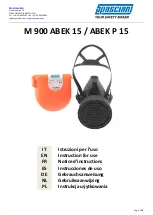
SCPI Introduction
Copyright © Itech Electronic Co., Ltd.
7
In this example, APPLy command assigns a sine wave with frequency of 455
KHz, amplitude of 1.15 V and DC offset of 0.0 V.
Semicolon (;)
It is used to separate several commands in the same subsystem and can also
minimize typing. For example, to send the following command string:
TRIG:SOUR EXT; COUNT 10
has the same effect as sending the following two commands:
TRIG:SOUR EXT
TRIG:COUNT 10
Question mark (?)
You can insert question marks into a command to query current values of most
Parameter. For example, the following commands will trigger to set the count as
10:
TRIG:COUN 10
Then, you may query count value by sending the following command:
TRIG:COUN?
You may also query the allowable minimum or maximum count as follows:
TRIG:COUN?MIN
TRIG:COUN?MAX
Comma (,)
If a command requires several Parameter, then a comma must be used to
separate adjacent Parameter.
Space
You must use blank characters, [TAB] or [Space] to separate Parameter with
key words of commands.
Common commands (*)
The IEEE-488.2 standard defines a set of common commands that perform
functions such as reset, self-test, and status operations. Common commands
always start with a asterisk (*) and occupy 3 character sizes, including one or
more Parameter. Key words of a command and the first parameter are
separated by a space. Semicolon (;) can separate several commands as
follows:
*RST; *CLS; *ESE 32; *OPC?
Command terminator
Command strings sent to the instrument must end with a <Newline> (<NL>)
character. IEEE-488 EOI (End or Identify) information can be used as <NL>
character to replace termination command string of <NL> character. It is
acceptable to place one <NL> after a <Enter>. Termination of command string
always resets current SCPI command path to root level.
















































